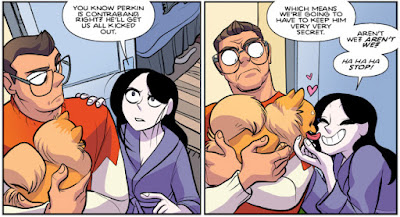Facts matter: an apology
Facts. They're important. Recently, talking on social media about a previous matter relating to Bleeding Cool and Rich Johnston specifically, I got something wrong and I owe Rich an apology.
To be clear: I don't like Bleeding Cool. I don't like what they do or the way they do it, but that isn't the issue here.
A few years back, I got a surprising amount of stick for criticising the wave of outrage directed at Jeremy Clarkson over his "striking public sector workers should be executed in front of their families" comment. People were aghast that I was "defending Jeremy Clarkson". Except that wasn't what I was doing. Clarkson's remark was the punchline to a perfectly good joke about the BBC's "balanced coverage" policy — my point, the principle I was defending, was that it is fundamentally wrong to strip words of their context and use them to claim someone said something that they patently didn't say. My point was that if we allowed such behaviour to go unchallenged then none of us is safe.
If we allow someone to be misrepresented simply because we don't like them, or because the false statement or sentiment attributed to them aligns with our own feelings about them, then it stops being a principle and who will stand up for us when we're on the receiving end?
Which brings us to my apology. For the purposes of clarity, what I said (more or less) was that Bleeding Cool gave a platform to white supremacist Vox Day and that, when faced with a backlash, Rich Johnston was removed from his position and that this was obviously a transparent attempt at damage limitation because he was back in post a couple of days later as if nothing had happened.
To his credit, Rich sent me a perfectly civil email simply saying "That isn't true". So I googled the whole sorry affair.
And it isn't true. It was initially reported by some online sources that Rich had been removed, due (I think) to confusion between his role/job title at BC and that of Mark Seifert, author of the Vox Day interview.
I don't know now whether I missed the subsequent clarifications on this point, or whether my own inherent biases have cause me to remember the matter very selectively.
It doesn't matter. I was wrong. People can (and have) argued at length about how much happens on BC without Rich's knowledge, and I think it's uncontroversial to say that the whole interview with Day was, at the very least, disastrously misjudged, but none of that matters, because facts matter and I made a specific accusation against a specific person based on incorrect information.
Truth and facts are under attack from all sides. There are people and organisations out there in the new and old media actively trying to undermine the very notion of objective 'fact' and they need to be resisted with every fibre of our being.
And that's the thing. Facts either matter, or they don't, and I believe that they do. We can't defend the notion of 'objective truth' if we only choose to defend it in instances that align with our own philosophical, moral or political positions. We have to be better than that. I have to be better than that.
Rich: I got this wrong. I'm sorry, and I wanted to set the record straight.







